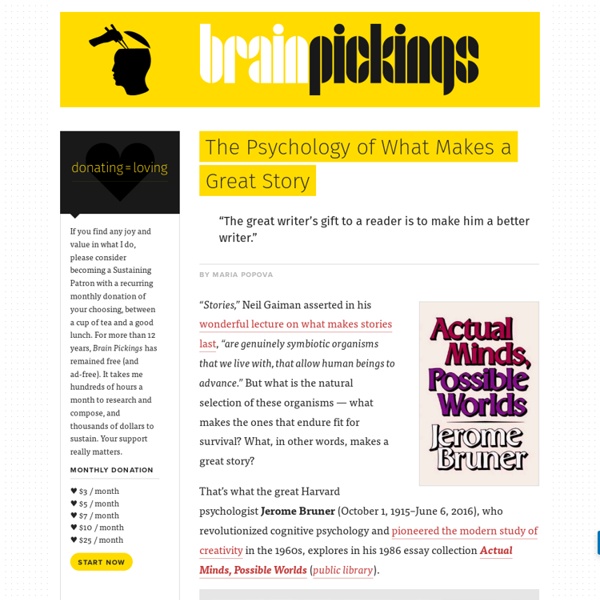Which languages rule the internet?
Google recognises the most languages, across its Translate and Search services – with 348 languages supported on Google Search. The following infographic from Statista explores how some of the world’s biggest websites deal with the globe’s linguistic diversity. Source: Statista
What Makes a Good Story? (Tips for Young Authors)
Good writers often break rules—but they know they’re doing it! Here are some good rules to know. Theme A theme is something important the story tries to tell us—something that might help us in our own lives.
it could save your sanity
In 2017, there were reportedly more than 50 million people struggle with dementia worldwide. A shocking number, and one said to double every twenty years. Any doctor will recommend that you keep on top of your physical health — eat right, exercise, get enough sleep.
The Great Books Foundation
Shared Inquiry™is a method of teaching and learning that enables people of all ages to explore the ideas, meaning, and information found in everything they read. It centers on interpretive questions that have more than one plausible answer and can lead to engaging and insightful conversations about the text. And it is based on the conviction that participants can gain a deeper understanding of a text when they work together and are prompted by the skilled questioning of their discussion leader. In this type of discussion, each participant engages in an active search for the meaning of a work by reading closely, asking questions and discussing actively. Discussion leaders provide direction and guidance in order to get participants thinking, listening, and responding to questions and answers from others in their discussion groups.
The Origin of Just About Everything, Visualized
The world is full of simple questions that have complicated answers. For example: What is the universe made of? Why do we have wax in our ears? And where exactly does belly button lint come from? “There are so many great scientific origin stories out there,” says Graham Lawton, features editor at New Scientist. In his new book, The Origin of (Almost) Everything, Lawton worked with designer Jennifer Daniel to unravel dozens of life’s biggest mysteries.
Collaborative writing activities
Collaborative writing Some teachers tend to avoid writing in class, perhaps feeling that as it is something which learners do individually and in silence, it is better done for homework. However, when writing is done as a collaborative activity, it can have many of the same benefits of a group speaking activity: Discussing the writing process obviously provides more opportunities for learners to interact in English, a benefit in itself. It can also help learners to develop their communicative competence by forcing the negotiation of meaning.
How Bibliotherapy Can Help Students Open Up About Their Mental Health
For adolescents struggling with depression, anxiety and grief, the use of books as a therapeutic tool can be invaluable. Tweens and teens often get stuck in their narratives, believing that the fictional stories they tell themselves are accurate. Because of the insecurities that adolescence can bring, it’s easy for them to assume that being excluded from a peer’s birthday party or being left out of a group text exchange is a personal affront. Social media often fuel these beliefs, which can take a toll on a youth's mental health. Shame and stigma often prevent students from speaking out and seeking the emotional support they need. But reading about a fictional character’s experiences can normalize those feelings and give adolescents the courage to open up about their own struggles.
Create Your Guts Out!
30hands Mobile is a fun, innovative storytelling app that allows students, teachers and anyone with creativity to easily create narrated stories or presentations based on photos, images, drawings using an iPad, iPhone or iPod. Different from other presentation apps, 30hands Mobile focuses on the power of storytelling and ITERATIVE CREATIVITY. Like pages in a book, photos or images are dragged around the desktop into the order of the story.



